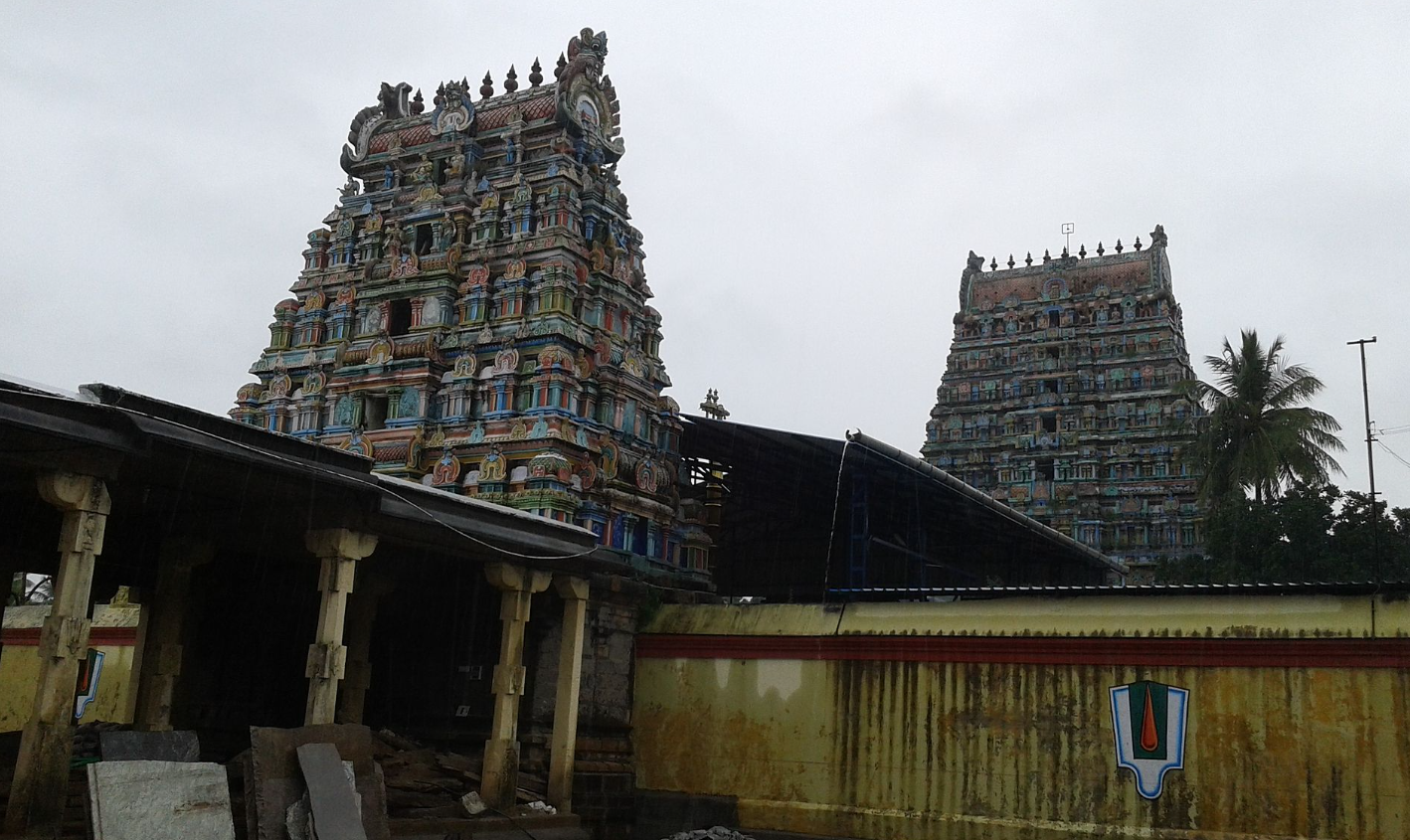Origin/History :-
- It is believed that the Thirunagari temple is one of the Mada Temples constructed by Ko Chengat Chozha, a Shaivite king who built temples for Vishnu despite his personal devotion. According to the Annual Report of Epigraphy (ARE) 1918, inscriptions 406 to 409, four inscriptions from this temple have been recorded, the earliest of which dates to the Vijayanagara period.
- One inscription from 1386 CE by Viruppanna Udayar refers to the temple as Thirunagar, also known as Vigneswara Nallur, located in Rajathi Raja Valanadu. The inscription lists lands between the Kaveri and Kollidam rivers, which were gifted to Vayalali Manavalar as sarvamanyam.
- Another inscription from 1517 CE, attributed to Krishna Devaraya, details his victories and donations made to Shiva and Vishnu temples. It lists various villages in the Chozha Mandalam where donations were made, including Chirapalli, Kattupalli, Nagari, Nangur, Azhunthur, Thevur, Thiruvinnagar Akalangan, Manikuzhi, Pugalur, Muttam, Vaigal, Pathiripuliyur, Thinai Nagar, Iraivanaraiyur, Seravan Mangalam, Navalur, Thittaikudi, Kanattaamarpullur, Thiyagavalli Grama Vinnagar, Kurichi, Pandanainallur, Thalachangadu, Pungur, Kurukkai, Visalur, Thalainayiru, Thirumangalakudi, Velliyakudi, Thirunthuthevankudi, Suriyanar Koil, Kodikka, Courtallam, Kuraiyalur, Virkudi, Sirukudi, Achalpuram, Valputhur, Nallur, Andar Koil, Gangaikondan, Thirumiyachur, and Vazhuvur.
- Another inscription, which does not mention the king, records the names of the Andhanars who recited the Vedas and the lands gifted to them at the Ulakuyya Veetruruntharuliya Nayanar alias Vayalali Manavalar Koil. It details the gifts of Najai and Punjai lands, cows, and Parikalans at Jayankonda Chozhavalanattu Thalachangadu and Rajendra Chozha Nallur.
Puranic Significance :-
According to the temple legend, Karthama Prajapathi, a son of Lord Brahma, undertook severe penance to attain Moksha (salvation). Moved by his devotion, Divine Mother Lakshmi interceded, but Lord Vishnu decreed that Karthama would have to wait until the Kali Yuga to achieve his goal. After being reborn in Treta and Dwapara Yugas, Karthama was born as Prince Sangabalan in Kali Yuga.
Sangabalan fell in love with a beautiful damsel named Kumudavalli, who was an ardent devotee of Vishnu. She stipulated that he must feed one thousand Vaishnavites daily to win her hand in marriage. Determined to fulfil this challenge, Sangabalan began feeding Vishnu devotees, and even resorted to burglary to fund the mass feeding. Impressed by his dedication, Vishnu decided to guide him on the spiritual path.
Disguised as newlyweds, Vishnu and Lakshmi visited Sangabalan's home. Sangabalan, not recognizing them, attempted to rob them. Vishnu then whispered the sacred Ashtakshara Mantra in his ears, which turned Sangabalan onto the path of devotion. He became a great Vishnu devotee known as Thirumangai Azhwar.
Vishnu appeared to Thirumangai Azhwar and his wife as Ranganatha. Since Vishnu was also in the guise of a bridegroom, he is revered here as Kalyana Ranganatha. This place is also known as Azhwar Koil, after Thirumangai Azhwar, and Vedarajapuram, after the presiding deity Vedarajan.
